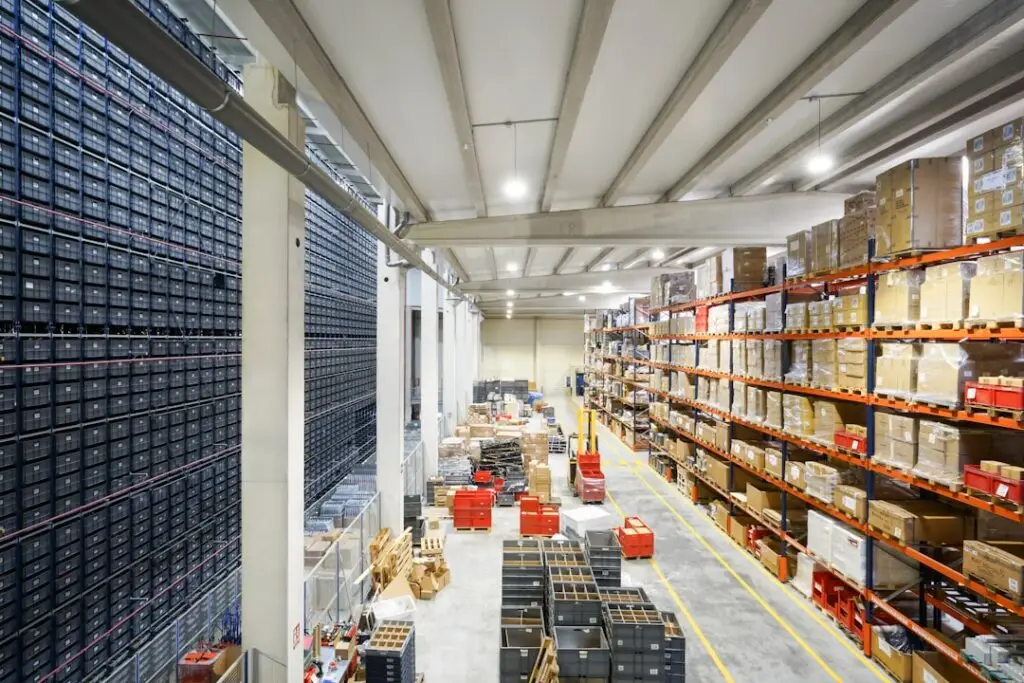Supply chain professionals face disruption on every front, whether from geopolitical uncertainty, constantly shifting consumer expectations, technological advancements, or ever-worsening natural disasters. The latest McKinsey Global Supply Chain Leader Survey suggests that these problems will likely remain the norm, with nine in ten survey respondents saying they encountered supply chain challenges in 2024. Supply chains must adapt or risk being left behind. Traditional supply chain systems, designed with the best intentions as “all-in-one/one-stop-shop” solutions, are slow to update, expensive to modify, and cumbersome to scale because of their rigid, monolithic structures. As a result, supply chain professionals struggle to keep pace.
Enter composable technology—the modular, flexible, innovative approach revolutionizing supply chain operations. Composable systems provide a blueprint for agility, resilience, and responsiveness, empowering organizations to take on specific challenges, achieve quick wins, and swiftly pivot in the face of disruption.
What is Composable Technology?
At its core, composable technology is about building a technology landscape made up of modular, loosely connected, flexible systems. These specialized “modules” are purpose-built for specific supply chain functions like inventory management or demand forecasting. Rather than relying on a single, unified codebase, composable solutions are made up of autonomous microservices that can be combined, replaced, or scaled individually without disrupting the entire system.
Think of it like building LEGO blocks: each module (or microservice) performs a specific function, snapping into place with others to create a robust and adaptive ecosystem tailored to your organization’s specific needs.
Key components of composable architecture include:
- Microservices: Independent, self-contained units built for specific tasks (e.g., inventory optimization or demand forecasting).
- API-First Design: APIs ensure microservices communicate seamlessly, enabling smooth data exchange across systems.
- Cloud-Native Development: Cloud-native platforms provide scalability and rapid deployment that traditional systems cannot achieve.
- Headless Architecture: The front end (user interface) is decoupled from the back end, giving businesses greater flexibility to enhance user experiences without disrupting functionality.
This modularity creates a technological ecosystem where supply chain professionals can address specific problems, introduce new capabilities, and make continuous incremental improvements without risky and expensive system overhauls.
The Limitations of Monolithic Systems
Traditional supply chain technology, often referred to as a “monolithic” system, promises all-in-one solutions for planning, design, and execution. However, these systems present significant challenges:
- Rigid Structure: Any update or improvement requires extensive modifications to the entire system.
- Slow to Adapt: Integrating new tools or modules takes months—sometimes years—leaving organizations vulnerable to fast-moving change.
- Increases time to value: Long deployment times drastically delay the ability to attain benefits and gain value out deployed systems rather than quicker to deploy modules.
- High Costs: Replacing or upgrading monolithic systems is expensive, resource-intensive, and often disruptive to both supply chain and IT operations.
- Inflexible Processes: Monolithic architecture creates a network of interdependencies, a “house of cards,” where a single process or feature change can disrupt the entire workflow.
For example, a company looking to add a lead-time prediction tool to its supply chain might find itself entangled in a web of interdependencies—requiring costly adjustments to outdated systems. This lack of adaptability makes it nearly impossible for businesses to innovate and respond to today’s ever-changing supply chain landscape.
Why Composable Technology is a Game-Changer
Composable architecture solves the challenges of a fragile, interdependent supply chain by replacing rigidity with flexibility, speed, and innovation.
Here’s how:
Tackling Specific Problems: Instead of overhauling an entire system, composable solutions allow the implementation of modular tools for targeted improvements. IE., a business could deploy an AI-driven inventory optimization module without disrupting other functions.
Achieving Quick Wins: Composable systems are designed to deliver results quickly. Updates and improvements can be implemented in weeks, not months, enabling businesses to realize immediate value.
Reducing Risk: Composable solutions integrate with existing systems, minimizing disruption and lowering barriers to adoption, which reduces downtime and operational risks. There’s no need for an entire rip-and-replace overhaul, leaving you vulnerable to disruption during the transition.
Optimizing Costs: Pay for what you need—when you need it. Modular services allow companies to scale as needed, avoiding the high costs of large-scale transformations.
Increasing Resilience: Composable technology improves adaptability, allowing businesses to pivot rapidly in response to demand surges, supplier delays, or external disruptions.
Practical Applications of Composable Technology in Supply Chain
According to global management consulting firm McKinsey & Company there is still an opportunity in supply planning for AI systems to automate the analysis of multiple structured and unstructured data sources from multiple supplier tiers, logistics providers, shop floor data systems, and in-house demand-forecasting systems. To understand how composable solutions drive real results, let’s look at three practical examples:
Lead Time Prediction
A composable lead time prediction service combines historical data with external factors like weather patterns or supplier performance to forecast lead times dynamically. Traditional systems rely on static averages, which often leads to inaccurate predictions and inventory issues.
Benefit: Reduced stockouts, optimized inventory levels, and fewer costly safety buffers.
Outcome: Faster, data-driven decisions that improve customer service and operational efficiency.
Continuous Supply Chain Design
Composable architecture enables continuous design by integrating real-time inventory impacts and service levels vs estimated impacts when design solutions work in isolation rather than integrated into network design decision-making. For example, an inventory optimization service can work alongside dynamic freight modeling to evaluate and adjust network designs on the fly.
Benefit: Replaces old data and outdated assumptions with real insights into the impact of inventory strategy, enabling organizations to make practical, high-impact changes.
Outcome: Improved service levels, reduced costs, and greater adaptability to changing conditions.
Bidirectional System Communication
Composable services enable bidirectional communication, ensuring that updates in one system automatically reflect in others. In many organizations, data flows in only one direction, causing misalignment between design and execution.
Benefit: Greater alignment across departments, improved visibility, and reduced redundancies.
Outcome: Faster responsiveness, streamlined operations, and better decision-making.
How to Get Started with Composable Technology
Adopting a composable mindset requires a strategic approach. Here are actionable steps to get started:
- Identify High-Impact Problems: Start small by pinpointing specific challenges that a composable solution can address—like demand forecasting or lead time variability.
- Evaluate Your Existing Systems: Audit your current technology to identify areas of rigidity and focus on where modular improvements can deliver immediate value.
- Focus on API Integration: Ensure your systems can integrate and communicate seamlessly through APIs to enable data sharing and interoperability.
- Leverage Cloud-Native Platforms: Move away from on-premise solutions and toward cloud-native architectures for scalability, flexibility, and faster deployment cycles.
- Partner with Technology Providers: Work with experts like GAINS, who offer best-of-breed modular solutions that integrate into your existing workflows.
Agile, Resilient, and Innovative: The Future of Supply Chain
Composable technology is redefining supply chain management, making it more agile, adaptable, and efficient. Unlike monolithic systems, which leave businesses trapped in outdated processes and modes of thinking, composable platforms offer supply chain professionals the freedom to innovate, adapt, and grow. By enabling targeted solutions, faster implementation, and reduced costs, composable systems empower businesses to turn volatility into opportunity.
In a world of constant change, the supply chain must adapt—not react. Composable architecture provides the strong foundation needed for supply chains to become proactive, resilient, and ready to thrive in any environment.
GAINS understands that supply chain professionals’ challenges demand more than technology to solve their problems—they require a proven methodology to drive measurable results. GAINS’ solutions are designed to move your business forward faster and have been battle-tested in some of the world’s most complex supply chain environments. By combining our advanced tools and “Proven Path to Performance,” GAINS delivers tangible improvements to your supply chain agility, resilience, and efficiency without the costly risks of traditional system overhauls.
Beyond adopting new technology—you’re partnering with a team that delivers trusted expertise, tailored solutions, and a commitment to unlocking the full potential of your supply chain network. GAINS equips you with the solutions and strategies needed to outpace competitors, satisfy customers, and build a supply chain that thrives in the face of disruption.



